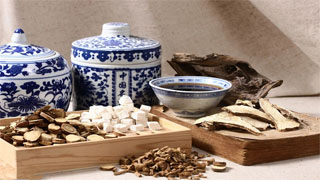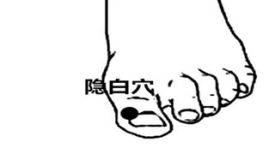
"In the north, it is black. It goes into the kidney, opens the orifices in the two yin, and stores essence in the kidney, so the disease is in the stream. It tastes salty, its water is like swine, its grain beans, it should be four seasons, and the star is on top of it, to know that the disease is in the bone. Its sound and feathers are six, and its smell is rotten." - "The Yellow Emperor's Internal Classic • Suwen • Golden Chamber True Words Chapter IV"
Looking back, it tastes salty and resembles water. Its taste is salty, and the corresponding taste of kidney water is salty. Let's review again what the taste of liver wood corresponds to earlier? The taste of liver wood corresponds to sourness; What is the taste of Heartfire? The taste of heart fire is bitter; What is the taste of spleen soil? It's sweet, it's sweet; What is the taste of lung gold? It's Xin, Xin is a kind of flavor that spreads and is similar to the current spiciness. The ancients called this flavor Xin.
Spicy flavor is different from spicy flavor, as it also includes sesame. For example, Sichuan pepper, also known as Sichuan peppercorn, belongs to the category of spicy flavor. Chili peppers are also spicy. And pepper powder, can this taste be called spicy? It's not spicy, it's a wandering and divergent flavor, and this flavor is spicy. There is also mustard, which is the powder made from white mustard seeds. Chinese mustard is white mustard, which is the powder made from white mustard seeds. The Japanese mustard is called green mustard, which is the final product of green mustard. When it reaches the mouth, many children say it's spicy, but when you taste it carefully, its taste is a kind of upward and outward movement, which is called spicy.
What is the taste of northern kidney water? It's salty. Saltiness is the taste of salt. So why take Liuwei Dihuang Pills? In ancient times, Liuwei Dihuang Pills were believed to nourish the kidneys. What water was used to take Liuwei Dihuang Pills? Take it with diluted salt water. These medicines that nourish the spleen and stomach usually contain licorice, which has a sweet taste and helps to invigorate the spleen and stomach. We know from these flavors that the five flavors correspond to the five organs. Remember that the corresponding taste of kidney water is salty.
'Its kind of water' means that it corresponds to water in nature. Let's review again. What is the class corresponding to Dongfangmu? It is grass and trees; The class corresponding to southern fire is fire; The central spleen soil corresponds to soil; The Western lung gold corresponds to gold; Kidney water corresponds to water. What is the corresponding animal among the five livestock? "Swine", swine means pig.
Let's review again, what are the five animals? The first is chicken, which corresponds to wood; The second is sheep, which corresponds to fire; Soil corresponds to cattle; Gold corresponds to horses; Water corresponds to swine, which is the five livestock.
Let's look back and see what comes after the Five Animals? It's' Qigu Dou ', and here comes the five grains. What are the five grains? Let's review again. The grain of the kidney is beans, also known as "shui", which means "grass" or "uncle's uncle". The ancients believed that beans and glutinous rice had the same meaning, both being plants of legumes. Let's review again. Liver wood corresponds to wheat, which is barley and wheat; Fire corresponds to millet, which is a sticky yellow rice, also known as sticky yellow rice. This is millet, which corresponds to fire; The third one is soil, what does soil correspond to? It's Ji, as we all know, there are two interpretations of Ji in ancient times. One refers to millet, which means millet, with millet being the top one and the bottom one. In fact, its mature plant is called millet. Removing the skin of millet is called millet, which is called millet.
There is another explanation, Ji is a high beam, which are two different interpretations in ancient times. But everyone must remember that Ji and Shu are quite similar in the Kangxi Dictionary, but what are the differences? It's just that millet is sticky, but millet is not sticky, so everyone remembers this. So Ji is millet, sometimes interpreted as sorghum. Ji is also the Ji of Jiangshan Sheji. Sheji represents sacrifice, and Ji represents the five grains. Therefore, ancient people believed that Jiangshan had a huge relationship with sacrifice and crop production, so it was called Jiangshan Sheji. This is a digression.
Moving on, among the five grains, gold corresponds to rice, and water corresponds to beans. Just now, rice means rice, and beans refer to the legumes we eat, such as soybeans, black beans, and soybeans, all of which belong to legumes. So the five grains are wheat, millet, millet, rice, and beans. Beans are divided into several types, one is soybeans and the other is black beans, both of which belong to the Kidney Valley. So many people say, 'Dr. Peng, how can I nourish the kidneys?' It's simple, you eat beans, especially black beans. Some people even asked, 'Should I eat the yellow black beans inside or the blue black beans inside?'. According to the correspondence between the five grains and the five organs, legumes correspond to kidney qi.
I remember reading a classic of traditional culture before. In "Yin Guang Master Wen Chao", Yin Guang Master advocated eating beans, believing that they can supplement nutrition and are more nutritious than eating meat. I have previously written an article on the dietary advice of Master Yin Guang, which specifically mentioned that he believes that eating beans has a strong nourishing effect on the body, and this is the principle he is talking about.
Further down, 'it corresponds to the four seasons, and above it is the star of Chen', which corresponds to the natural world and what star does it correspond to? The corresponding one is Chenxing. Five stars correspond to the Five Elements and the Five Organs. Do you remember what a five-star rating is? It is the Star of the Year, the Star of Mars, the Star of Zhen, the Star of Taibai, and the Star of Chen. The corresponding star of Jupiter is Wood, which is now known as Jupiter; Mars corresponds to Mars; The town star corresponds to Saturn; Taibai Star is Venus; Chenxing is Mercury, which corresponds to the five stars in the sky.
Looking back, 'to know the disease lies in the bones', which corresponds to the fact that the kidneys govern the bones, so his illness is also reflected in the bones. So people with kidney qi deficiency have a characteristic of decreased bone density, osteoporosis, and brittle bones, all of which are due to poor skeletal system. If the kidney qi is sufficient, the bone density will be high, the bones will be particularly heavy, and the bone quality will be particularly good. This type of person will live a long life. So ancient people judged whether a person lived long or not mainly based on several factors. The first one was whether the person's bones were very heavy, which indicates sufficient kidney qi; The second point is to check if his feet are warm. Many people have cold feet, indicating that their body is weak due to a lack of yang energy. If the soles of the feet are warm, especially for the elderly, but not too hot, it's another pathological condition. It's not that they can't handle the heat, it's not that. On the other hand, if the soles of the feet are warm, it means that their yang energy in both lower limbs is unobstructed, indicating good health and longevity.
What else do you want to see? It also depends on his breathing. The ancients said that people with big nostrils live longer. Teacher Nan Huaijin's book once recorded this point. What does it actually mean? What he said is that your nostrils are large, indicating that your breathing is more transparent and deep. The lungs control the qi, regulate the breath, and the lungs face the hundred meridians. After the lung qi becomes stronger, the hundred meridians become unobstructed, so those with larger nostrils and deeper and longer breathing have longer lifespans. These are the characteristics. This is the corresponding relationship observed by ancient Chinese people, where the kidney is the main bone.
Another thing is that the body has a large bone, as we mentioned earlier, also known as a tall bone. Where is this bone? If the bone in the waist is not good, people are prone to getting sick and experiencing a decline in physical function. So whether it's traditional internal martial arts or traditional standing stakes, the key is to spread the tail and ensure sufficient kidney essence, which is a technique of standing stakes. We also need to move the tail when we have time. After the tail is moved, the qi in the waist is also filled, and the kidney qi is easily sufficient. When the kidney qi is sufficient, the circle around the waist and meridians in the human body becomes strong. Once strong, the whole body becomes strong. So whether it's weightlifters, wrestlers, or martial artists, they all have to tie their belts, that is, their waistbands, and they have to tie them well in this circle. Why? The most important thing is to fix the circle of veins, which is convenient for exerting force and consolidating the dantian. This is actually derived from the understanding of human body science in the Yellow Emperor's Inner Canon, and the reactions in the body.
Disclaimer: This article is a sharing of health knowledge. The drugs, prescriptions, acupuncture and moxibustion and other treatment and health preserving methods mentioned in this article should be applied under the guidance of professional doctors, and should not be applied by yourself. We are not responsible for any issues arising from improper use.


